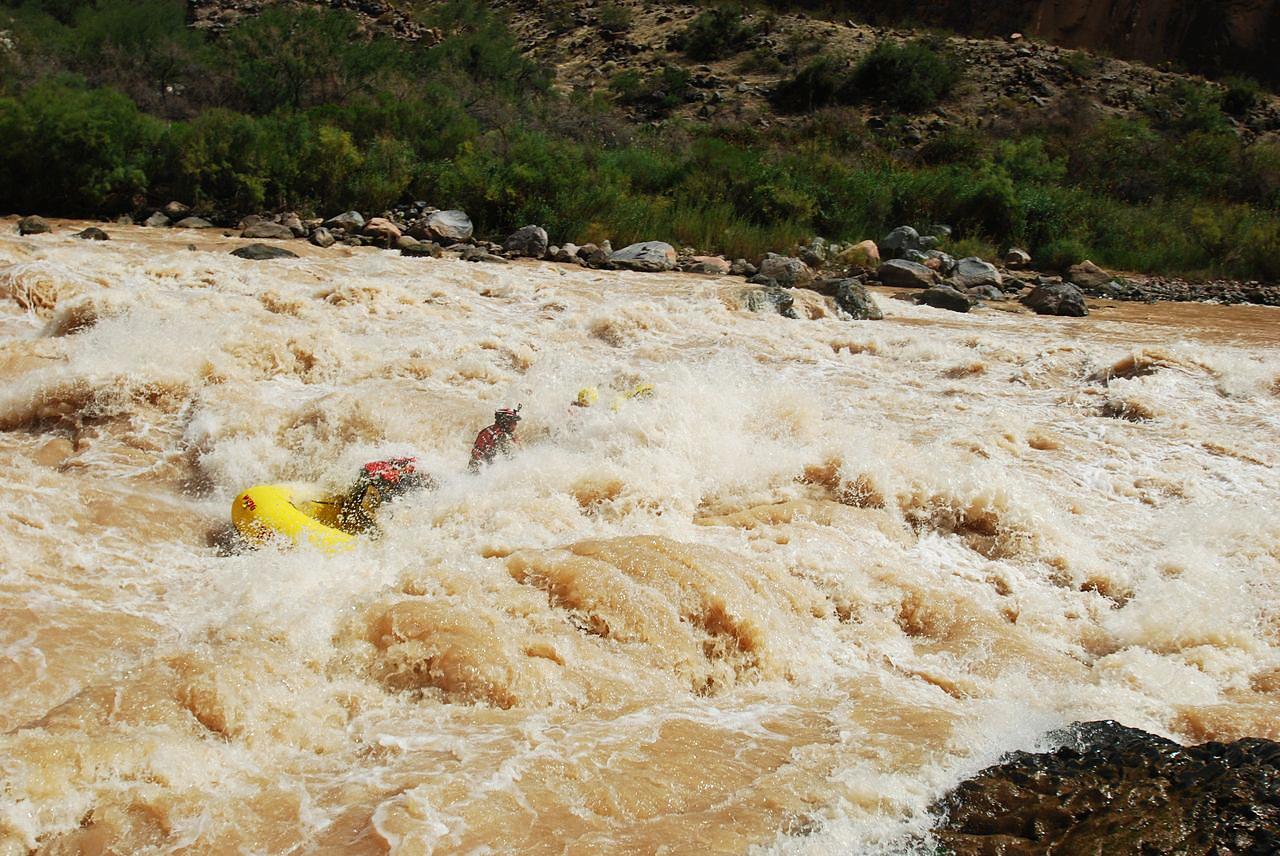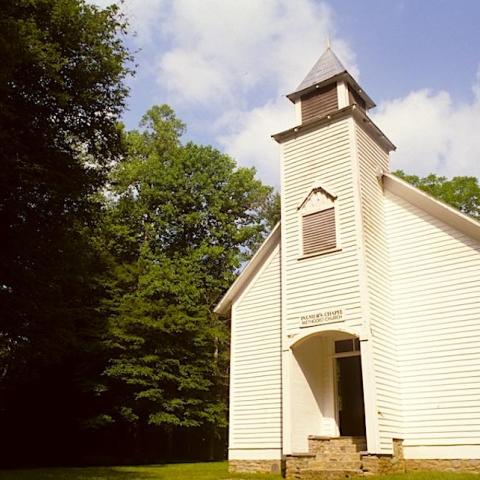
Lost Paddle Rapid, Gauley River National Recreation Area/Jay Young, Adventures on the Gorge
What’s in a name? Well, when you hear Hance, the Big Drop, Lost Paddle, or Lava Falls, we’re talking about some of the largest, craziest river rapids in our national parks. Interesting names, for sure, but how do they rate? We posed this question to our river rats: What are the best rapids in the parks? They came up with quite a list. So, if you’re looking for exciting and death-defying whitewater in the parks…
Warm Springs, Yampa River, Dinosaur National Monument, Utah/Colorado
“It was created in dramatic fashion from a large flash flood in 1965. Our founder, Dee Holladay, was on the river when it happened. The Yampa is also a special river in that it’s one of the last free-flowing rivers on the entire Colorado River system.” — Karen Johnson, Holiday River Expeditions

Lava Falls, Colorado River, Grand Canyon National Park/O.A.R.S.
Lava Falls, Colorado River, Grand Canyon National Park, Arizona
“The biggest rapid in the canyon and definitely the most fabled. Rated Class 10 (the highest degree of difficulty in the Grand Canyon), Lava can be 20 of the scariest (and best) seconds of an entire Grand Canyon rafting trip for guides and passengers alike.” — Cari Morgan, O.A.R.S.
Big Drop 2 & 3, Colorado River, Canyonlands National Park, Utah
“Big Drop 2 is legendary in Cataract Canyon—and among whitewater rapids anywhere in the world. In the Spring (flows over 50,000 cubic feet per second) it is perhaps the largest of the largest whitewater in North America—even surpassing that of the Grand Canyon. “When a high water year does happen once a decade or more, it is not an overstatement to say the waves in Big Drop 2 and 3 are nearly three stories high. Any guide on the Colorado River worth their salt is watching the snowpack and placing bets with fellow guides, guessing how high the flow will get, and which day in June it will reach peak flows.” — Kam Wixom, Western River Expeditions

Big Drops, Cataract Canyon, Canyonlands National Park/Patrick Cone
Razorback and Two Rocks, Nenana River, Denali National Park, Alaska
“I would vote for two rapids on the Nenana River, which is the boundary of Denali National Park. The first is Razorback and the second is Two Rocks. They are both big, powerful, and fun class III+/IV rapids depending on water level and they are both great for spectators/ visitors to the park...roadside attractions.” — Bill Overington, Denali Outdoor Center
Disaster Falls, Green River, Dinosaur National Monument, Utah/Colorado
“The first fall was not great, only two or three feet, and we had often run such, but below it continued to tumble down 20 to 30 feet more, in a channel filled with dangerous rocks that broke the waves into whirlpools and beat them into foam. I turned just to see the boat strike a rock and throw the men and cargo out. Still they clung to her sides and clambered in again and saved part of the oars, but she was full of water, and they could not manage her. Still down the river they went, two or three hundred yards to another rocky rapid just as bad, and the boat struck again amid ships, and was dashed to pieces. The men were thrown into the river and carried beyond my sight.” — Major John Wesley Powell
Lost Paddle and Pillow, Gauley River, Gauley River National Recreation Area, West Virginia
“Of all the ones I’ve done, Lost Paddle might be one of the most difficult and Pillow the most impressive. When you come around the bend 200 yards above Pillow Rock, the cauldron of boiling water, foam, rocks and waves is about as good as it gets in the rafting biz.” — Dave Hartvigsen, Adventures on the Gorge

Two Rocks, Nenana River, Denali National Park and Preserve/Denali Outdoor Center
The Spout, Potomac River, Great Falls Park, Virginia
Paddlers have known about Great Falls as long as there has been whitewater kayaking. Many of the features— such as the Spout, the Fingers, the Fish Ladder—have names that predate paddling, in some cases by hundreds of years. But it was not until paddlers started running waterfalls regularly in the 1970s that paddlers began to seriously consider running the Falls. The first descent of Great Falls was made in 1975 by local experts Tom McEwan and Wick Walker, with the second descent by Steve McConaughy and Great Falls National Park Ranger Bill Kirby. — American Whitewater
Eighteen Footer, Gunnison River, Black Canyon of the Gunnison National Park, Colorado
This rapid’s name says all you need to know about this Class V challenge. — NPT

Warm Springs Rapid, Yampa River, Dinosaur National Monument/Patrick Cone
Sacred Dancing Cascade, McDonald Creek, Glacier National Park, Montana
The run is characterized by a handful of challenging Class V bedrock drops separated by Class I/ II sections offering spectacular views of the surrounding mountains. At least one drop may require portaging. — American Whitewater
Raven Fork, Great Smoky Mountains National Park, North Carolina/ Tennessee
This narrow, 2.6-mile-long gorge is considered for experts only, as during normal flows rapids dubbed Mangler, Cave Man, Anaconda, and Headless Horseman can be rated V+. It’s no place to lose your head.
Rattlesnake, Daddys Creek, Obed Wild and Scenic River, Tennessee
This S-curving rapid is rated IV at higher river flows and features a ledge dropoff at the bottom. Be leery of its bite. — NPT
Grand Canyon of the Elwha, Elwha River, Olympic National Park, Washington
This river is a class V expedition trip—an 8.5-mile hike in to the put-in and two canyons with mustrun class IV and V rapids. The Grand Canyon of the Elwha is truly a whitewater treasure and one of the finest runs in Olympic National Park. Expert paddlers from around the world have come to experience this river, but there have been a couple incidents requiring rescues. — American Whitewater




 Support Essential Coverage of Essential Places
Support Essential Coverage of Essential Places







Add comment